Vimanas Of The Rama Empire: Flying Machines Dominated Ancient Skies In Distant Past
A. Sutherland - AncientPages.com - Sanskrit texts are filled with references to gods and battles they fought in the sky, using powerful Vimanas equipped with the most sophisticated deadly weapons.
Once upon a time, there were present (permanently or temporarily) several races on Earth. Some of them fought for dominance over our planet.
The Indian yogi Swami Vivekananda and Nikola Tesla
Stories of these encounters were continuously transmitted orally from one generation to another until they were finally written down through the centuries.
Today we can read about them in sacred epics such as "Ramayana", "Mahabharata", "Bhagavata Purana" and others.
At the end of the 19th century, the Indian yogi Swami Vivekananda was the first to demonstrate Vedic religion and philosophy in the United States and Europe. He had met with great scientific minds such as Edison, Lord Kelvin, and brilliant scientist Nikola Tesla. Tesla was deeply inspired by Vivekananda's concepts and the knowledge he obtained from Indian Vedas.
He was also fascinated with Vedic cosmology and its concepts and understood that they perfectly complemented already existing western theories.
However, Tesla failed to "show the identity of energy and matter… The mathematical proof of the principle did come until about ten years later when Albert Einstein published his paper on relativity. What had been known in the East for the last 5,000 years was then known to the West…" (Tesla Memorial Society of New York).
Vedic texts say that the "aerial car" - we know as Vimana - could move like a UFO, in any way the pilot wanted - up, down, forward, or backward. It was shaped like a sphere and borne along at great speed on a powerful wind generated by mercury that apparently played an important role in propelling the 'heavenly chariots" frequently described in ancient Sanskrit texts.
In his book "The Anti-Gravity Handbook" David H. Childress mentions yet another Indian source, the Samar and says that "Vimanas were "iron machines, well-knit, and smooth, with a charge of mercury that shot out of the back in the form of a roaring flame".
It is "possible that mercury did have something to do with the guidance system and the propulsion system of the Vimanas? Could the Soviet discovery of "age-old instruments used in navigating cosmic vehicles" in distant caves of Turkestan and the Gobi Desert, prove the significance of mercury in the Vimana'systems?
These mysterious instruments were described as hemispherical objects of glass or porcelain, ending in a cone with a drop of mercury inside.
Rediscovered in a temple in India in 1875, the "Vaimanika Sastra" (a 4th century BC) is Sanskrit text on aerospace technology.
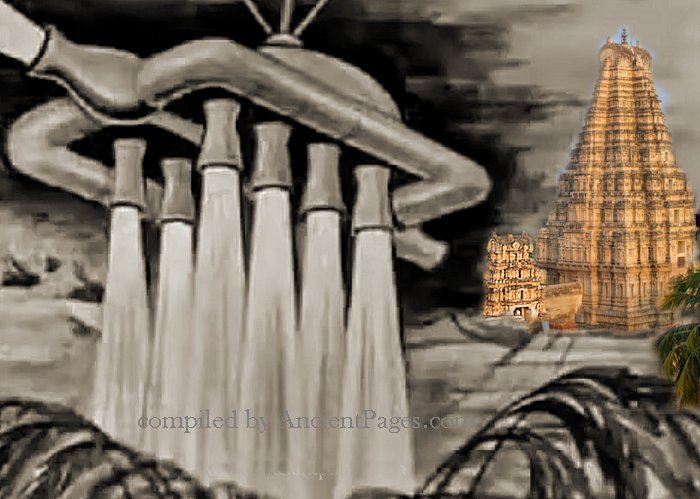
Bharadwaja the Wise compiled information about the Vimanas from at least eighty earlier texts and Vedic epics for his book "Vaimanika Sastra". Scholars who found the work in 1918 in the Barbuda Royal Sanskrit Library north of Bombay, India, have verified the authenticity of Bharadwaja's work as well as the manuscripts he consulted when he assembled it.
The work includes detailed descriptions of flying vehicles for civil aviation and warfare, two- and three-decker planes, cargo-carrying aircraft, and passenger planes used for the transportation of 400 to 500 people.
It also includes construction details (31 essential parts of these vehicles and 16 materials from which they are constructed, which absorb light and heat, instructions for pilots, accurate dimensions, and descriptions of what type of metal and other materials would be most suitable for construction of aircraft, including apparatuses that could neither catch on fire nor break.
Bharadwaja the Wise refers to no less than 70 authorities and 10 experts of air travel in antiquity; unfortunately, these sources are today lost.
It is highly doubtful that any poet, even the most brilliant one, could create this kind of "high-tech fairytales" with precise descriptions of powerful weapons and advanced vehicles.
On the other hand, it is likely that the later writers on Vimanas, wrote as observers and from much earlier texts, and were understandably confused on the principle of their propulsion or other technical details.
Powerful Vimanas, both gigantic and smaller ones designed for just one passenger, are described in these texts. Next to them, there are descriptions of "flying cities", moving in space and almost self-sufficient. These "cities" - gigantic objects rotating around their own axis - were spacious and richly decorated. Such cosmic cities had special gates for arriving craft and were constantly orbiting Earth.
Also, the "Samaranganasutradhara" describes how the vehicles were constructed. The work, which gives us insights into the ancient Indian technological knowledge, has one of its eighty-three long chapters, devoted to various mechanical devices and explains the construction of bird-shaped aerial cars; it also has some verses dealing with the robots meant to act as guards.
Written by – A. Sutherland AncientPages.com Staff Writer
Copyright © AncientPages.com All rights reserved. This material may not be published, broadcast, rewritten or redistributed in whole or part without the express written permission of AncientPages.com
Expand for referencesChildress, David H. The Anti-Gravity Handbook
Tesla Memorial Society of New York
S. Andrews, Lemuria and Atlantis
Childress, David H. Technology of the Gods
More From Ancient Pages
-
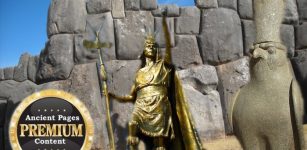 The Untold Story Of Sacsayhuamán – Falcon’s Place Is Not What It Seems
Ancient Mysteries | Apr 28, 2020
The Untold Story Of Sacsayhuamán – Falcon’s Place Is Not What It Seems
Ancient Mysteries | Apr 28, 2020 -
 Ancient Astronomical Symbols At Göbekli Tepe Confirm A Comet Swarm Struck The Earth 11,000 B.C.
Archaeology | Apr 23, 2017
Ancient Astronomical Symbols At Göbekli Tepe Confirm A Comet Swarm Struck The Earth 11,000 B.C.
Archaeology | Apr 23, 2017 -
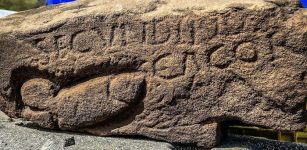 Ancient Graffiti Unearthed At Roman Vindolanda Reveals What One Roman Thought Of Another
Archaeology | May 27, 2022
Ancient Graffiti Unearthed At Roman Vindolanda Reveals What One Roman Thought Of Another
Archaeology | May 27, 2022 -
 Pre-Hispanic Carved Stone Monuments Discovered On A Mountaintop In Puebla, Mexico
Archaeology | Jul 25, 2020
Pre-Hispanic Carved Stone Monuments Discovered On A Mountaintop In Puebla, Mexico
Archaeology | Jul 25, 2020 -
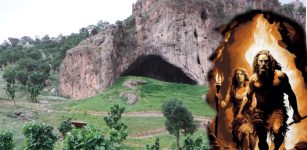 Has The Mystery Of Neanderthals’ Flower Burial At Shanidar Cave Been Solved?
Archaeology | Aug 31, 2023
Has The Mystery Of Neanderthals’ Flower Burial At Shanidar Cave Been Solved?
Archaeology | Aug 31, 2023 -
 Puzzle Of The Bull Rock Cave – Ancient Mass Grave Remains Unexplained
Featured Stories | Mar 12, 2018
Puzzle Of The Bull Rock Cave – Ancient Mass Grave Remains Unexplained
Featured Stories | Mar 12, 2018 -
 Biblical Mystery Of The Forbidden Fruit And The ‘Deep Sleep’
Ancient Mysteries | Feb 13, 2022
Biblical Mystery Of The Forbidden Fruit And The ‘Deep Sleep’
Ancient Mysteries | Feb 13, 2022 -
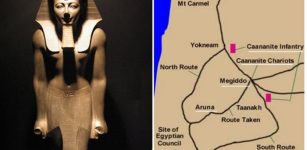 On This Day In History: Battle Of Megiddo Between Thutmose III And King Of Kadesh’s Coalition – On Apr 16, 1457
News | Apr 16, 2016
On This Day In History: Battle Of Megiddo Between Thutmose III And King Of Kadesh’s Coalition – On Apr 16, 1457
News | Apr 16, 2016 -
 Deception And Hidden Truth – Ancient Struggle Of The Eagle And Serpent – Part 1
Ancient Mysteries | Sep 4, 2019
Deception And Hidden Truth – Ancient Struggle Of The Eagle And Serpent – Part 1
Ancient Mysteries | Sep 4, 2019 -
 How Did These Five Common Words Enter The English Language?
Linguistic Discoveries | Oct 28, 2024
How Did These Five Common Words Enter The English Language?
Linguistic Discoveries | Oct 28, 2024 -
 World’s Oldest Wine Found In 2,000-Year-Old Roman Tomb In Carmona, Spain
Archaeology | Jun 19, 2024
World’s Oldest Wine Found In 2,000-Year-Old Roman Tomb In Carmona, Spain
Archaeology | Jun 19, 2024 -
 Ruins Of Ancient City Emerged From The Sand In Kerman Province, Iran
Archaeology | Apr 15, 2017
Ruins Of Ancient City Emerged From The Sand In Kerman Province, Iran
Archaeology | Apr 15, 2017 -
 Anthropologists’ Quest To Save An Alamo Cannon
News | Aug 7, 2024
Anthropologists’ Quest To Save An Alamo Cannon
News | Aug 7, 2024 -
 Mysterious Deaths In A Dangerous Valley May Be Related To Ancient Events
Ancient Mysteries | Mar 14, 2022
Mysterious Deaths In A Dangerous Valley May Be Related To Ancient Events
Ancient Mysteries | Mar 14, 2022 -
 The Untold Story Of The Lost City Of Machu Picchu Ignored By Historians
Ancient Mysteries | Aug 4, 2020
The Untold Story Of The Lost City Of Machu Picchu Ignored By Historians
Ancient Mysteries | Aug 4, 2020 -
 How Important Was Dance In Ancient Egypt And What Purpose Did It Serve?
Ancient History Facts | May 5, 2021
How Important Was Dance In Ancient Egypt And What Purpose Did It Serve?
Ancient History Facts | May 5, 2021 -
 LIDAR Images Reveal Cambodia’s Greater Angkor Region Was Home To 700,000-900,000 People
Archaeology | May 8, 2021
LIDAR Images Reveal Cambodia’s Greater Angkor Region Was Home To 700,000-900,000 People
Archaeology | May 8, 2021 -
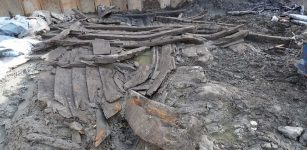 Three 17th Century Shipwrecks Discovered In Central Gothenburg, Sweden
Archaeology | Oct 8, 2019
Three 17th Century Shipwrecks Discovered In Central Gothenburg, Sweden
Archaeology | Oct 8, 2019 -
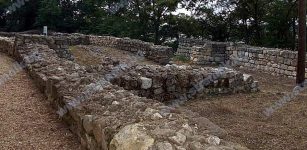 Fortress Wall Of Ancient Roman City Of Sexaginta Prista Discovered
Archaeology | Apr 16, 2016
Fortress Wall Of Ancient Roman City Of Sexaginta Prista Discovered
Archaeology | Apr 16, 2016 -
 India: Plastic Surgery And Genetic Science – Found In Ancient Vedas – Were Practiced Thousands Of Years Ago
Ancient Technology | Oct 29, 2014
India: Plastic Surgery And Genetic Science – Found In Ancient Vedas – Were Practiced Thousands Of Years Ago
Ancient Technology | Oct 29, 2014


